Fleet Foxes: The Life and Times of Ford’s 5.0 Mustang and LTD Special Service Packages
Fast out of the box and easy to modify, in the late 1980s, the 5.0 Fox-body Mustang was the king of cheap speed at drag strips and high school parking lots alike. But there was one fast Fox with a more intimidating reputation than any other. Built from 1982 to 1993, the Special Service Package (SSP) was the one Mustang you didn’t want to see in your rearview mirror: the Police Mustang. But while the SSP is the most famous (and collectible) police Ford of the 1980s, it wasn’t the only Fox-body police car.
The first Fox-body patroller was a version of the Ford Fairmont in 1978, and though it was a durable fleet car, its tepid performance limited its appeal as a pursuitmobile. Ford tried again in 1984 with the LTD Special Service Package, yielding much better results. With a throttle-body–injected 5.0 shared with the Mustang, the 1984–85 LTD SSP was the quickest American four-door police car of its day, but the introduction of the Taurus in late 1985 ended its run early.
Both SSPs, but especially LTDs, are rare now, even more so in restored period-correct condition, so when I learned that local restorer Robert King had both SSPs—a 1985 LTD and a 1988 Mustang—in his driveway, I had to check them out.
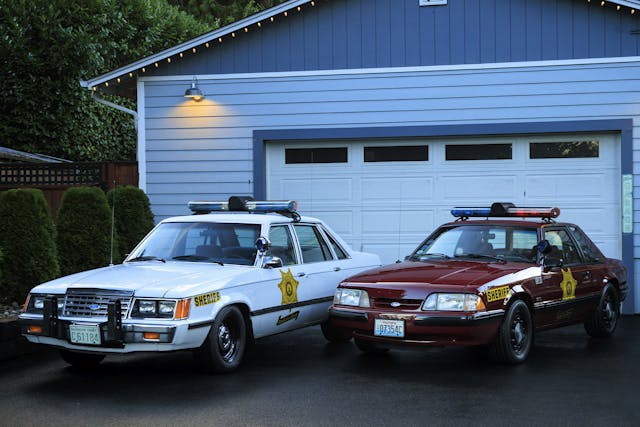
But old police cars are about much more than the hardware. They’re snapshots of another time and place in even more direct ways than most old cars, and the 1980s were a deeply weird time for police cars, as law enforcement agencies had to scramble to adapt to the huge changes of the Malaise Era. For context about where these cars fit into the policework landscape of the 1980s, I sat down with former Seattle officer Jim Ritter, who founded the Seattle Police Museum in 1997.
Cop Cars of Hill Street Blues Era
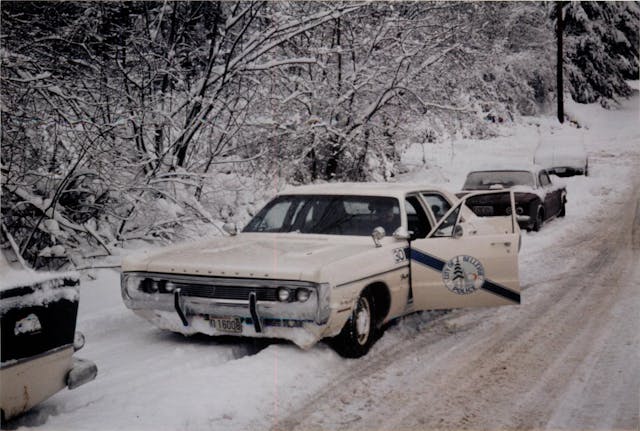
“I started as a police cadet in Bellevue, just east of Seattle, back in 1975 and joined the King County Sheriff’s office in 1980, so I drove many 1970s police cars. Also, King County couldn’t always afford to replace cars frequently, so when I started we had two 1974 AMC Matadors and an Ambassador with 401 V-8s, which the LAPD famously used in the early seventies. They were ugly but fast. My first assigned patrol car was a 440 four-barrel ’76 Plymouth Fury.”

Ritter’s cadet years, of course, were ones of great change for law enforcement’s favorite cars. Big-blocks went first, then came catalytic converters and downsizing. The changes were most dramatic at financially troubled Chrysler, which had a commanding 80 percent share of the police car market in 1978 and a long history of catering to police departments. By 1982, the cars it was building had been transformed.
“First we got the [Dodge] St. Regis with 360 four-barrels, which weren’t as fast as the previous cars but were more comfortable. Then came the [Dodge] Diplomat and [Plymouth] Gran Fury.” As updates of what had been the “small” Dodge Aspen in 1976, the versions in Ritter’s fleet used 155-horsepower four-barrel 318 V-8s. “Unbeknownst to the Feds, some departments disconnected the emissions gear on the big cars because they were just too underpowered.”
Despite their middling power and mushy handling, Mopar’s dominance made the Diplomat and Gran Fury the default police cars of the 1980s. But with budgets tight in a post-gas-crisis time of inflation, many agencies tried out even smaller cars, and all these changes opened the door to new alternatives. Chrysler offered police-spec K-cars from 1982, which cops disdained, Ritter said, and which just couldn’t hold up to the abuse of police work.
Speed, Substance, and Symbolism
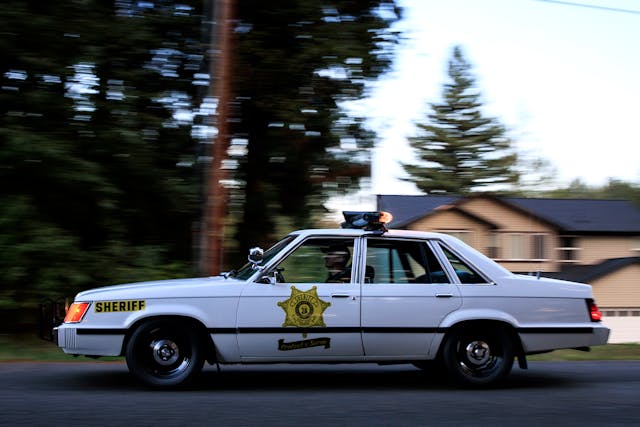
Into this environment came the LTD, which offered one real advantage: serious speed. The 1978–82 Fairmont police package (also sold as a much rarer Mercury Zephyr), started out with the 302 V-8, but its output was so tepid that at first its power stats weren’t even listed in the brochure, and it gave way to the even weaker 255-cid V-8 in 1980. The LTD was cut from the same unibody Fox-platform cloth and reused many Fairmont pieces, but things had changed.

The LTD SSP (and its civilian sister, the LTD LX) packed a 165-hp 5.0-liter EFI HO V-8, and while that doesn’t sound like much power now, it was plenty then. Plus, the whole package only weighed about 3300 pounds—about 200 pounds lighter than the Diplomat and 600 less than the larger Chevy Impala or Ford LTD Crown Victoria. There were also big 10-inch brake discs up front, much larger front and rear sway bars, heavy-duty springs, and a Traction-Lok differential.

All this made the LTD the quickest and best-handling four-door police car of its day, but it didn’t find mass acceptance. “Sometimes with a light car you can really chase your tail around because there’s nothing holding it down,” Ritter said. Officers loved its speed and handling, but they had two chief mechanical complaints: poor traction and weak brakes. The big discs looked good on paper, but they were prone to severe brake fade, and some agencies, notably the Santa Monica PD, soon dropped the LTD as a result.
Beyond the brakes, there were two other issues: size and image. “Law enforcement agencies were used to huge big-block cars, and it was hard for officers to adapt to smaller vehicles, especially six-foot-four guys like me. In the older cars, we had a console you could use as a small desk and room for all the gear. With the newer cars, we didn’t have any of that space.”

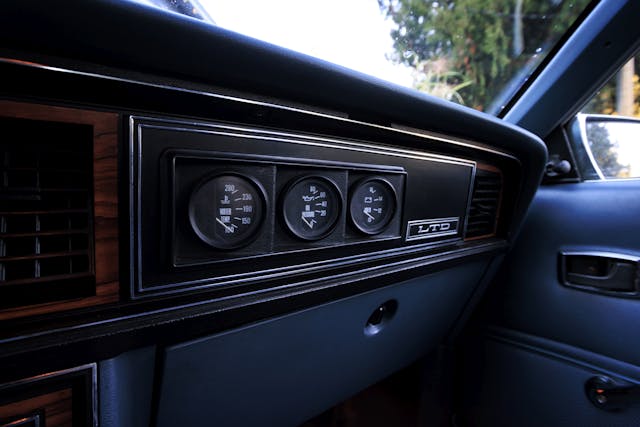
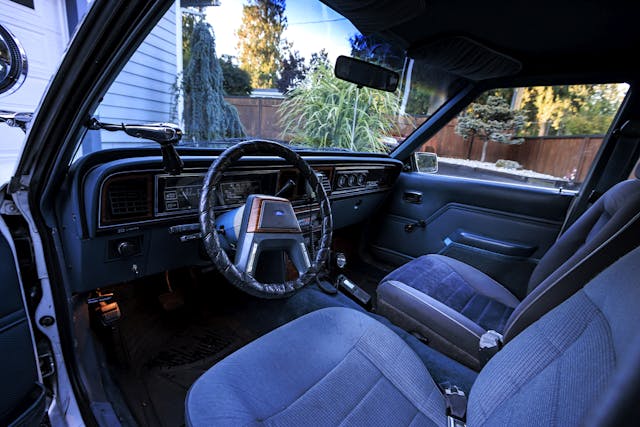
“Our patrol cars are our offices. We do our reports there, interview victims, and transport prisoners. You’re in that car all day pursuing criminals. It’s our lifeline for responding to and helping people, so we rely on it, and comfort and practicality are paramount.
“Even if we have a prisoner headed to jail, we want as little hassle as possible, for them and us. They’re already pissed off, and now you have to get them in the car. In the old days, three people fit in the back of a Fury, but now that wasn’t the case.” Notably, I couldn’t fit comfortably in the back seat of our feature LTD, and it has no cage. Many officers also worried about emergency egress in an accident in smaller cars with more confining interiors, and about the crash implications of ever-thinner–gage steel in car bodies.
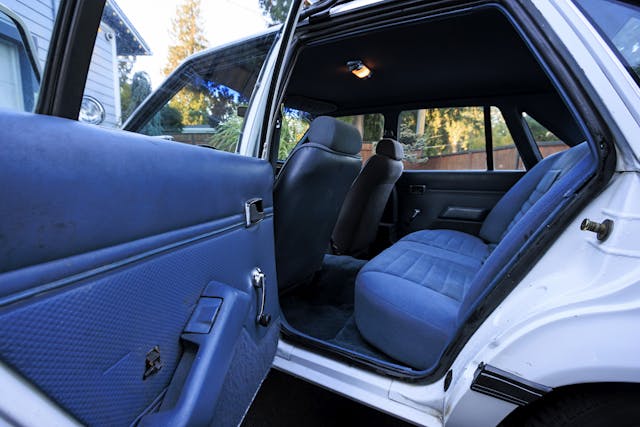
But police cars are also symbols. “Our cars are the most recognizable police thing that the public sees, and they have the same lore as a badge,” Ritter added. “The LTD just didn’t look like a police car. When you pull up to an unruly crowd of people you want that command presence. An intimidating car can also discourage suspects from running, and lengthy high-speed chases were more common then.”
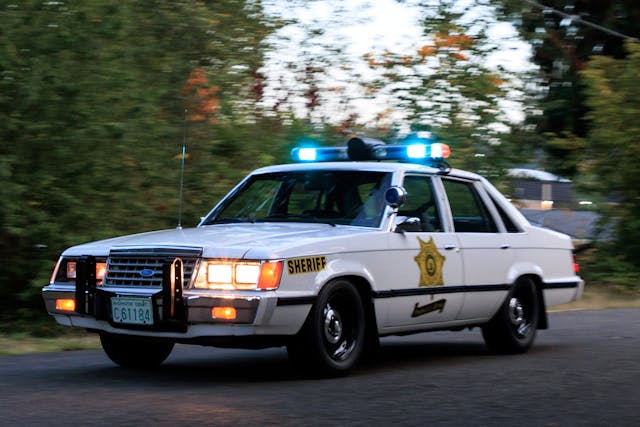
The Seattle PD used their LTDs sparingly from 1984 to 1990, when they were phased out and in some cases sold on to rural departments with even slimmer budgets. Ritter was glad, however, that he never had to try the 1980s’ smallest cop cars.
“Back then, a lot of chiefs would try to get public attention by purposefully getting small, efficient cars, and I remember the La Conner Police Le Car and a Plymouth Horizon closer to Seattle. You could barely fit in that Horizon with all your gear, the transmission went out all the time, you couldn’t put prisoners in the back seat, and it just looked ridiculous. When cops rolled up in that car they looked like clowns, so already their image and authority were tainted.”
“I Can’t Outrun a Mustang”
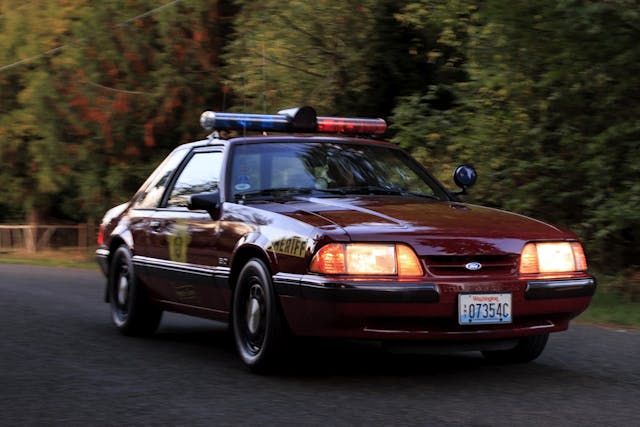
Mustang SSPs had no such problems. To this day, the Utah Highway Patrol’s website recounts the story of a chase that abruptly ended when a Mustang joined the pursuit. When asked why he stopped, the suspect responded, “I knew I could outrun those other patrol cars, but I can’t outrun a Mustang.” That story might be apocryphal, but in early 1986 one Utah trooper pursued and stayed with a fleeing motorcyclist at speeds up to 130 mph.
It launched in 1982 with a massive order from the California Highway Patrol (CHP), and Ford made the Mustang SSP available to other agencies a year later. Underneath, the mechanical bits were mostly Mustang GT pieces, but there were upgrades like Kevlar drive belts, brake rotor shields, and a throttle lock under the dash to keep the engine idling at a higher-than-normal rpm, which kept accessories powered when stationary for long periods. For weight savings, most agencies ordered notchback bodies, though this severely limited trunk and backseat space.

At first, the 5.0 made 175 horsepower, then 200 for 1986, and finally 225 from 1989. A four-speed was optional in 1983 and standard on the early CHP cars, but after that agencies could choose a five-speed or an automatic. Most chose the latter since it made it easier for officers to operate radios and equipment.
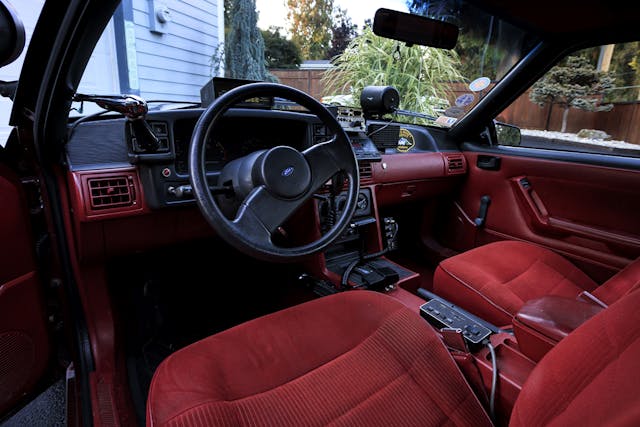

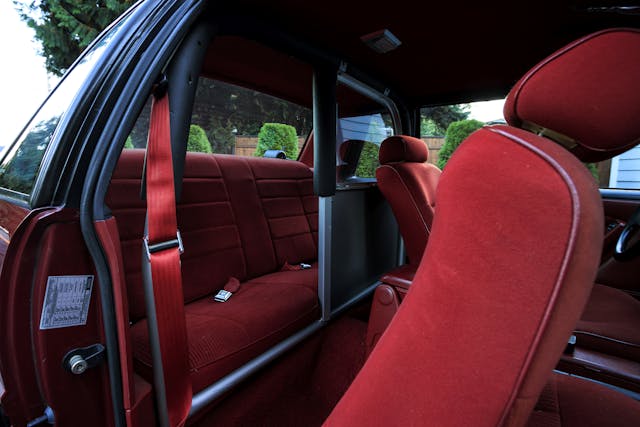
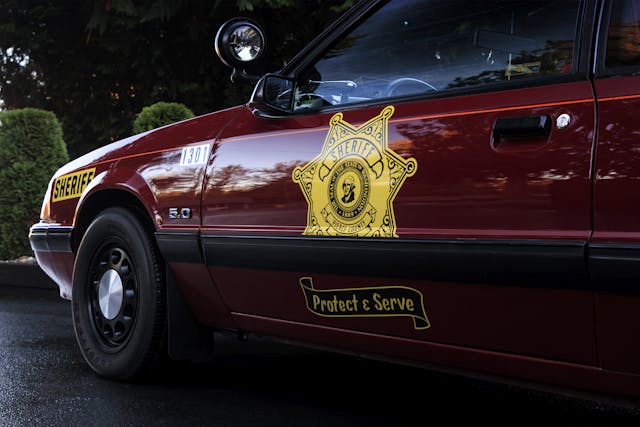
They were perfect for traffic and pursuit work, Ritter said, but not much else. Also, he added, “Once you catch somebody, you can’t put a prisoner in a Mustang.” However, since neither Chrysler nor GM offered anything like it until Chevy’s B4C Camaro in 1991, the Mustang SSP had a market to itself, hence its long life. It also served as a morale incentive. At many agencies only the most experienced officers got them, Ritter said. “For the state patrol, they were a reward for good performance, and reinforced the elite image of the best officers.”
The Restorer
Robert King has been a Mustang guy since he learned to drive. His first car was a 1979 Mustang, and he grew up with a Pierce County K-9 officer as a neighbor, so he was always fascinated by police cars, particularly after his daily college commute took him past an SSP, he said. “The Mustang you see here radared me several times a day in 1991.”
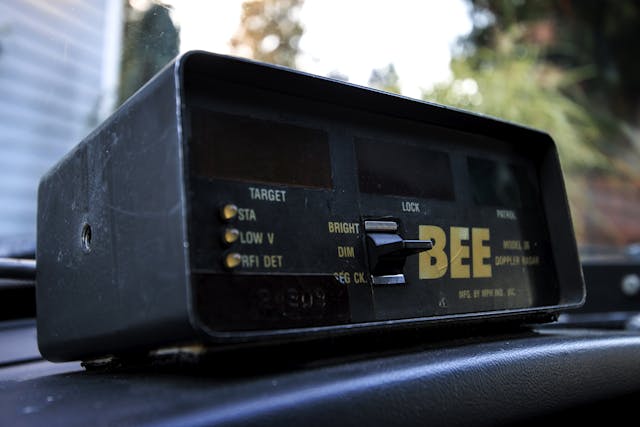
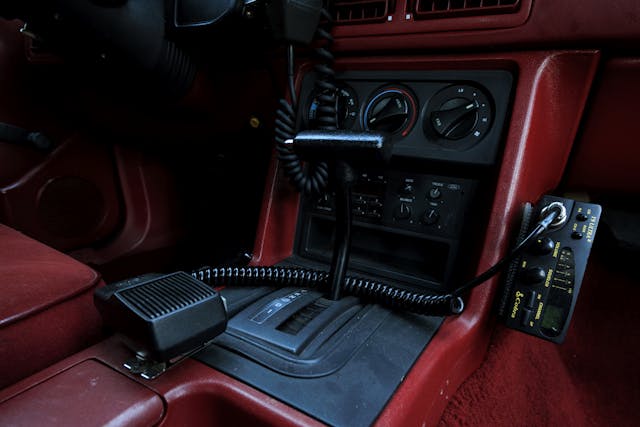
King bought his first Mustang SSP in 1997 for $2000. Police cars are basic and lead hard lives, but they’re expertly maintained and often disposed of before they become maintenance hassles. “Most Washington agencies would let them go after about 55,000–60,000 miles,” King said. By the mid-1990s, Mustang fans had figured out that SSPs were dirt cheap at auction and a fantastic base for hot rodding. Many were thrashed or wrecked, and most old LTD cruisers were later used up as taxis, a fate common to many police cars.
King’s purpose was different. He loves driving them but views his cars as living history. And restoring a police car is much harder than turning one into a track car. His current LTD and Mustang are his favorites because they’re local, but also because their accuracy reflects the lessons learned from 25 years of restoring multiple Mustang SSPs (and one ’84 LTD prior to acquiring his featured ’85).
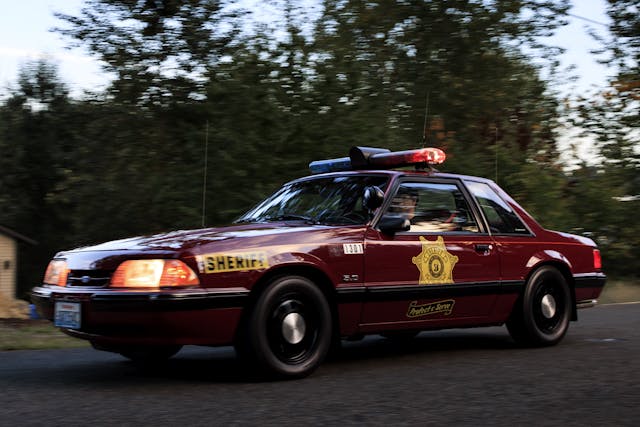

No two agencies outfit their cars the same way, and when units are decommissioned, most of the special equipment is removed. “And often thrown away,” added Ritter, as there’s usually no interest or budget to store old stuff except at faraway rural departments that have cheap space and may need to re-use old gear. There often aren’t reference photos or documentation of what was originally fitted, and obtaining specialized bits like the correct radios, radars, light bars, and other gear like the unique-to-Washington Motorola dual-band radios, are serious unobtanium.

The ’88 Mustang was auctioned in 1996 with only 44,000 miles on the clock, for just $2200. “They accidentally let it go too soon,” King said, and took months to approve the sale after they realized the error. Nevertheless, all of its equipment was stripped and an Oregon enthusiast used the car for a decade until King bought it. “It came to me naked, and it took 10 years to find the correct light bar.”
Fortunately, Pierce County had retained its first Mustang, so King had a direct reference for all of its equipment, a definite exception to the rule.

“If you want to restore cars like these, you need to build a trust relationship with the agencies and officers that worked with that car in the past,” King said, even if the car has been out of service a long time. Only that close-knit community of people knows how they were set up, and agencies generally don’t share that information with the public. Also, people are jerks, King added. “Not everybody has great intentions when it comes to building police replicas,” another reason agencies are reticent about sharing information.

King has come to know many people in the Pierce County Sheriff’s office over the years, because of his interest in the cars but also through volunteer work. Early on, that access helped King restore his car, and later on he provided expertise to them. “It was because of that rapport that I was able to get permission to have all of the decals on my cars remade,” he said, because the companies that produce them won’t do so for random civilians.

There are also legal issues on the road. “Washington has strict laws against putting anything on ‘civilian’ cars that leads to the perception that they’re police cars. You can’t even have red and blue lenses.” When the cars are in transit, all the decals have to be covered over with magnetic strips and the light bar covers replaced with amber units.
Mechanically, the commonality of Fox bodies makes support much easier, but even then, some things are rare. “There’s only one supplier still making weatherstripping for cars like the LTD.”
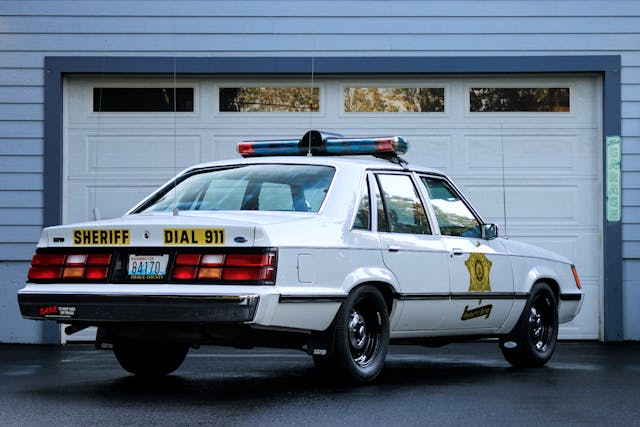
What are they like on the road? “They’re really stiff. They have huge sway bars so they can both corner really well, though you can tell the LTD is a little bigger and heavier. They have the same steering racks, shocks, and struts, and they’re both quick. The Mustang’s sequential fuel injection gives it more power too, but you can hear the throttle bodies open up on the LTD and it moves. The Mustang has much better brakes though.” King also confirmed the LTD’s infamous brake fade. “Four or five hard stops in a row and you’re done.”
Community Outreach
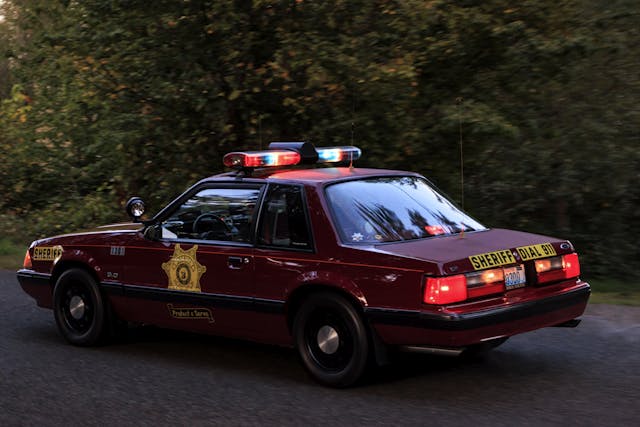
King’s police cars get attention everywhere they go, and despite the often strained community-police relations of the 2020s, nearly all of it is positive.
Ironically, cars that were purposefully intimidating when new are often looked upon much more warmly as classics, Ritter said. “The public notices these cars and really likes them, and I’ve tried to convince police leaders all over the country that sharing your history with the public and connecting with them in casual ways is a good thing. It helps demystify the public image of the police.”

The Seattle Police Museum had to close in 2017 after tunnel boring damaged its 19th-century building (Ritter is planning a reopening as a statewide museum), but in the decade prior, Ritter often used the museum’s 35 various police cars for public outreach in Seattle. King’s privately owned cars still serve a similar purpose at car events, and they are also frequent guests at parades and other types of events.
When the museum’s cars were parked in downtown Seattle, Ritter said, “We would frequently encounter people who didn’t like cops, but with whom we could bond and establish relationships with over the cars. That’s the kind of magic you can’t reproduce without it being organic.”
***
Check out the Hagerty Media homepage so you don’t miss a single story, or better yet, bookmark it. To get our best stories delivered right to your inbox, subscribe to our newsletters.
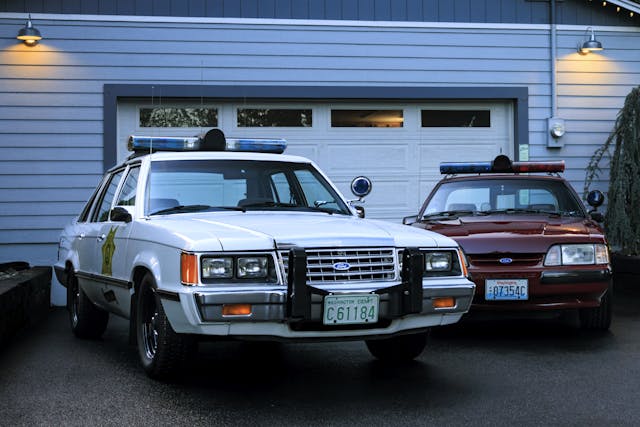


When I was just starting college in 1993, the local city PD was selling a 1990 SSP mustang. Black with white doors (same color scheme as the Texas DPS used on theirs at the time). They had bought it, but never actually outfitted it or put it in service, so it had zero miles on it and they were selling it for $5k. Being a broke college student I couldn’t quite scrape up the money for it. I regret that to this day.
Those Mustang SSP cars were SUCH a drag in my high school years. One of my friends had a 4 cylinder Mustang. I was a passenger in another car leaving the local lake after a day of recreation. We departed at a high rate of speed. The driver casually remarked that our friend must be seriously wringing his little Mustang out to be catching up to us. Spoiler alert, it wasn’t our friend. It was our friendly, neighborhood Texas DPS Trooper. That was our introduction to the Mustang SSP.
Purchased my 1984 SSP in 1988 for $4800 with 88K on the clock. It was a daily driver for the wife back then. The commute for school was Renton to Puyallup and she reported that traffic would not pass her on East Valley Highway #167. Family outgrew the SSP however it sleeps safely tucked away in the garage. I think I’ll 🤔 take it out for a spin this morning.
Great in-depth article and really piqued my interest. I own a 1970 Plymouth Fury III ex-Washington State Patrol car. I have owned it about 20 years, and it is restored as a clean top unmarked car. I’m still trying to locate any records on my car “WSP 845” as the ID tag is on the driver’s door jamb. It has a unique story that has yet to be confirmed.
I have a 2011 Crown Vic Police Interceptor, black and white, push bar, spot light, trunk antennas, and I drive it 2-3 times per week. It gets a lot of attention.
I remember back in the early 90’s, while on vacation in Fla, seeing one of these SSP Mustangs hanging pretty tight with a black 911 turbo. They were easily doing 120 when they flew by me.
Mustang SSP horsepower breakdowns: (not sure if some depts. used manual cars)
1982..157hp
1983-1984..165hp auto, 175hp manual
1985..165/180hp auto, 210 manual
1986..200hp
1987-91..225hp
My cousin was married to a Seattle cop in the ’70s, in 1974-5 , when visiting the area, I rode with him on patrol in the University district.
His car was a compact MOPAR, a Dart in 74. The next year it might have been another nameplate, MOPAR seemingly renamed its small or mid size cars a lot back then.
Meanwhile in my hometown, the local sheriff deputies were complaint about going from a Galaxie, to an Toronto or LTD II, not appreciating that their Seattle cousins were in a size smaller than that.
I love that generation of Mustang police car. I don’t recall seeing many or any LTD police cars. In my youth it was a Caprice Classic or a Crown Vic.
I was in Product Development and Product Planning came to us and said they wanted to have the 10 hole wheels painted black to look like a steel wheel with a dog dish hubcap. The reason for painting the wheels, the Police Departments didn’t want the public to know that they were more costly aluminum wheels.
There is no such thing as a Fox body. It is a Fox chassis / Fox platform that has different bodies mounted to it.
I used to work a Company that serviced equipment for a State Highway Patrol.
When one Mustang came in I took it out for a test drive and some pictures.
Nice smokey burnout with the cherries on, and one with the shotgun from in back of the driver seat.
I seen a switch under the dash and pushed it, heard a clicking in back.
Pulled out the shotgun, racked it. Yup, Double 00 buck, took a more couple pix.
When I returned the car the Trooper asked if I had fun with it, as he pointed to the rubber hanging from the bottom of the quarter panel. Doh!
Always wanted an undercover surplus cruiser. Best bud’s in Elementary/Junior/Senior High dad bought a surplus RCMP Royal Monaco cruiser for his Mom, just like in Hill St. Blues and Blues Brothers – back then the RCMP cars were an unusual Royal Blue on the main body and white doors to show off the emblem, so before auction, the doors were painted to (try to) match the blue . But it was full 9C1 spec – 440 ci, Firestone pursuit tires, body colour wheels with dog dish caps, rubber floors, cloth seats in front, vinyl in the back, holes with caulking all over the place inside and outside where the gear had been mounted. Very cool.
But up here in Vancouver, the RCMP also used two-door and four-door 1980-1981 Malibus as undercover cars, with the high-back bucket seats, 305 HO V-8’s, the Chev steel rally wheels with dog-dish caps – all flat colours, no emblems, and no trim. Most had power locks and A/C, no radios – and those models had rear windows that didn’t roll down, so the perfect police cars. Those were the ones I wanted! Dad wouldn’t budge though, even when at that time you could pick them up for less than $2000 at auction. There was also the odd plain-clothes two-door and four-door Dodge Diplomat with the 360 4bbl, but the smaller Malibu was cooler in my 16-year-old mind. Still see plenty of old Crown Vics around once the taxi trade stopped using them, but you never see the old Malibu 9C1’s. Probably a few stashed here and there.
In late 2016, I was looking to buy a cheap but reliable daily driver for the 120+ mile a day commute I was about to endure from my house to the site of a 2 year construction project I was going to be working on. A CL ad led me to purchase a late model 2005 Ford Crown Vic P-71 from a guy who was liquidating inventory from a former business he had owned. The business had consisted of purchasing used police cars at county auctions, and after a quick ‘tune-up’ and refurbishment (fluids, filters, tires, shocks, etc), would then be outfitted with specific LE equipment the client had requested. Once complete, the vehicles were put in containers and shipped off to be used at various countries overseas. Intrigued and curious as I had never heard of such a thing, he graciously answered my many questions about all aspects of the business and how he got started in it which morphed into a two hour long conversation where two people who share a passion discussed all things automotive. One thing I remember him saying about these vehicles is that if a person knew from which agency it had come from, a FOIA request to the agency could get the complete fleet service history of the vehicle… basically the equivalent of a Carfax.
Great article! I was always a fan of the Mustang and LTD SSPs. I went a slightly different way … a few years ago I purchased an 85 LTD/LX, the civilian version of the SSP. Having sat for several years, it was in rough shape. Of course a “gear-head’s” car is never really finished, but I spent a little over a year on it to get it back roadworthy. The 5.0 TBI motor is now a high compression roller cam 347 stroker with Edelbrock ProFlo SFI. I rebuilt the old AOD and the 3.27 posi rear to get it running, but I may upgrade them later. SN95 spindles with 5-lug hubs and rear axles, Cobra front brakes, rear disc brakes, Bilsteins and a bunch of other parts help with the suspension, stopping and steering duties. I spent a lot of time on bodywork and fresh original-color paint and cleaned-up interior, and I’ve spent a lot of time on EBAY and similar sites searching for NOS and rebuildable used parts. Body and interior parts are almost impossible to find. Except for the machine shop work on the old 5.0, I’ve done all the work myself. I always liked the look of the original twin-snorkel cold-air air filter assemblies, so that remains on top of the Edelbrock throttle body. The car is very “stock” looking, with exterior modifications limited to updated wheels and tires and a subdued exhaust rumble, it sits squarely in the “sleeper” category. The car runs great and everything works, including the AC, power sideview mirrors and even the clock. I love the work, so I expect the work to continue.
These Mustangs became so well known as cool police cars that one of the sales managers at the Ford dealer I worked for started ordering notchback 5.0 Mustangs and having the local decal and stripe guy put a styled “INTERCEPTOR” decal along the bottom of the door panels. People actually went for this and thought they were buying some kind of limited edition or police package. That sales manager had been in sales back when dealer specials like the California Special Mustangs were around and loved to dress up plain jane cars as ‘dealer specials’. They sold every time.